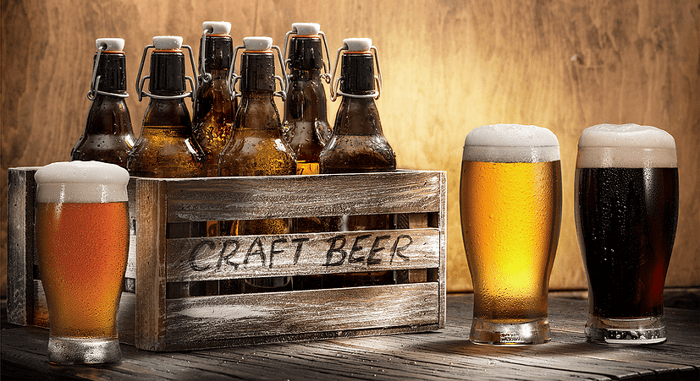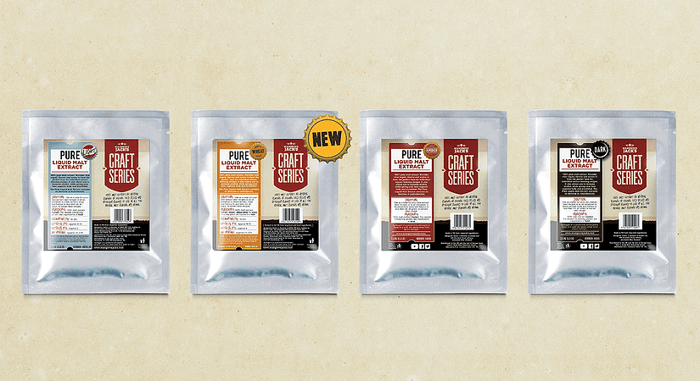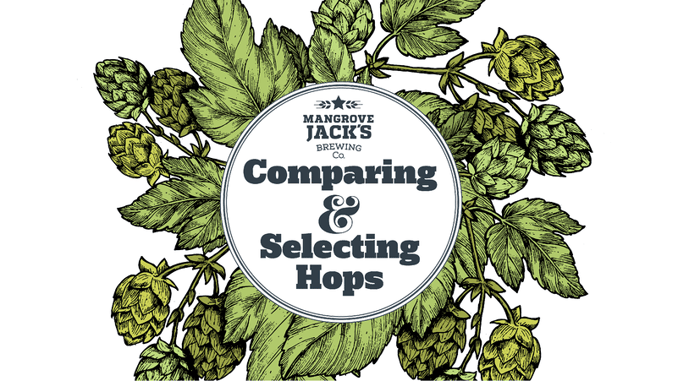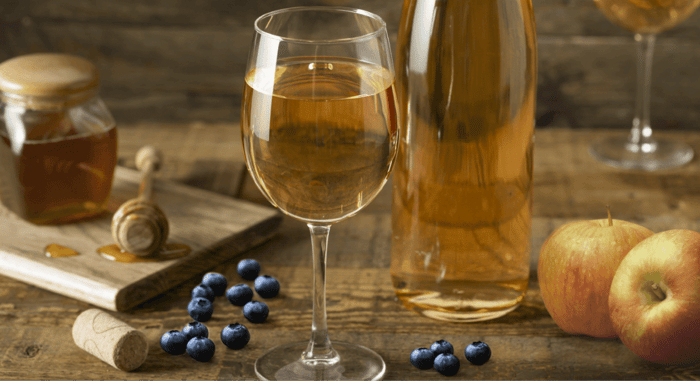On the first Thursday in August, beer enthusiasts, breweries and bars across the globe celebrate IPA Day, a toast to one of craft beer’s most iconic styles! In this article, we take a look at everything IPA - the main IPA styles, hop additions and answer some of the common questions that arise for homebrewers both new and experienced.
There’s no doubting the popularity of the modern IPA. Quickly becoming the craft beer darling, a good IPA can showcase a huge amount of hop bitterness and flavour wrapped up in a pale, light bodied beer with a dry finish.
The IPA style of beer is one of the most diverse when it comes to flavour variations and brewing practices. This makes it easily accessible for many a beer lovers palate, and encourages brewers to experiment.
Now, producing a decent IPA is fairly easy. The high hopping rates can cover a multitude of first time mistakes, making it a great choice for new brewers. But to produce a stand out IPA, you need to know your ingredients and how they work together.
To better understand this let’s first discuss the main IPA styles in a nutshell;
- IPA Styles -
The IPA style has expanded over the years and now includes Black, White, Red, Rye, Brown and Belgian, plus, more recently (though not officially) the ‘New England’ IPA.
English – Will generally have a similar fruitiness and caramel to British pale ales and bitters. They commonly use English yeast and English traditional or New World hops.
American – Stronger alcohol and more highly hopped than both the American Pale Ale and English IPA. It has less of the “English” character due to the use of American malt, hops and yeast. It often has a lighter body and the hop character is more 'Dank,' Piney and Fruity. This style has a big brother called the Double IPA that has a similar balance with more alcohol, malt and hops.
East Coast (New England) – Hopped to the same level as an American IPA with a higher focus on New World hop flavour and aroma. The perceived bitterness is lower as hops are used at the end of the boil and are also added to the fermenter. It has more body than any of the IPA styles due to the additions of wheat and oats that are commonly used. Examples have a low to high degree of cloudiness.
Red – Similar to the difference between an American Amber Ale and an American Pale Ale, a Red IPA will differ from an American IPA with the addition of some darker crystal malts giving a slightly sweeter, more caramel-ly and dark fruit-based balance and often a small amount of debittered roast malt for colour adjustment. Red IPA differs from an American Strong Ale in that the malt profile is less intense and there is less body; a Red IPA still has an IPA balance and doesn’t trend towards a barleywine-like malt character. Red IPA is like a stronger, hoppier American Amber Ale, with the characteristic dry finish, medium-light body, and strong late hop/dry hop character.
White – Similar to a Belgian Wit style, except highly hopped to the level of an American IPA. It is bitter and hoppy like the IPA but fruity, spicy and light like the Wit. Typically the hop aroma and flavour are not as prominent as in an American IPA. Just like a Belgian Wit, this style is sometimes brewed with coriander and orange peel, but should never be overpowered.
Black – Balance and overall impression of an American or Double IPA with restrained roast similar to the type found in Schwarzbiers. Think of it as an American IPA painted black with as little roast or chocolate character as possible.
Double (Imperial) – An extreme version of an American IPA in both alcohol strength and overall hop level (bittering and finish). It is less malty and hoppy, has lower body, and is less rich than an American Barleywine. It is typically not as high in gravity/alcohol as a barleywine, since high alcohol and malt tend to limit its drinkability.
Belgian – A cross between an American IPA/Double IPA with a Belgian Golden Strong Ale or Tripel. Due to the Belgian yeast used, this style may be spicier, stronger, drier and more fruity than an American IPA.
Brown – A stronger and more bitter version of an American Brown Ale, with the balance of an American IPA.
Rye – Drier and slightly spicier than an American IPA. The bitterness and spiciness from rye linger longer than an American IPA. It does not have the intense rye malt character of a Roggenbier. Some examples are stronger like a Double IPA.
- Questions for Brewing an IPA -
Now, let's take a look at the top three IPA brewing questions we get asked:
What hops should I use?
The fun and experimentation in IPA brewing truly lie in the hops. There are no real limitations for what you can do here, but a general rule of thumb would be that hops with similar traits work well together - think Citra and Centennial with big citrus flavour, or Simcoe and Amarillo, or East Kent Golding and Fuggles.
A great way to make hop flavours really pop is to combine hops with similar traits with another variety. An example of this would be combining Citra and Centennial with Chinook. This keeps within the big American ‘C’ variety family but adds a backdrop of spice and pine to make the citrus more distinctive. Ella and Galaxy is another good example of this. Combining Ella’s slightly spicy character with the passionfruit of Galaxy provides a distinctive ‘grapefruit’ flavour.
Experimentation is key as different palates will pick out different flavours in certain hop varieties. Play with hops until you have a good understanding of which varieties match, which varieties clash and which varieties contrast. That way, you will have a good understanding of which hop combinations to use. At the end of the day, what you're really looking for is a big aroma in the packet to get a big aroma in the finished beer.
When should I add my hops?
Many all-grain brewers follow a hopping schedule along the lines of 60/20/10/0 with the idea being that hops added at these different times during the boil will add different levels of aroma vs. bitterness. Hops added during the boil contribute to the bitterness of the beer due to boiling the hop essential oils; the bitterness compounds stay in the beer while the flavour and aroma compounds are boiled off.
Hops added towards the end of the boil or after the boil contributes more hop flavour and aroma due to less of the essential oils being boiled off. There are many free calculators online to help predict the amount of bitterness based on how much and when hops are added during the boil.
When you add your hops at the end of the boil and leave them to soak in the wort, this is called a hop stand or 'whirlpooling'. This technique is primarily used to infuse as much hop flavour into the beer. The amount of bitterness you get from these hops vary depending on the time duration, wort gravity and the temperature you initially add your hops.
For the freshness of aroma and some flavour that is key to the style, you should also consider dry hopping your IPAs. This simply means adding hops to the fermenter. For best results, add your hops with 2-3 days of fermentation left. At this stage, fermentation will not be vigorous enough to drive off delicate aromatics but there will still be enough yeast activity to create some amazing new aroma compounds from the hops.
If you are adding a very large amount of dry hops some brewers recommend splitting the addition. Leaving the dry hops in the beer for more than 3 days risks imparting more grassy and vegetal flavours. For the freshest flavour, 3 days is plenty of contact time with your beer.
What yeast should I use?
It depends on the type of IPA you are brewing. For an English IPA, use an IPA yeast. For an American IPA (or Black, Red, Brown or Double), use an American West Coast ale strain. For a New England IPA use an English or New England strain. For a White IPA, use a Belgian Pale strain.
Click here for a guide to the Mangrove Jack’s Yeast Strains.
- Time to Get Brewing -
So, what are you going to do with all this information? Why not check out this recipe for a Black IPA and get brewing!




